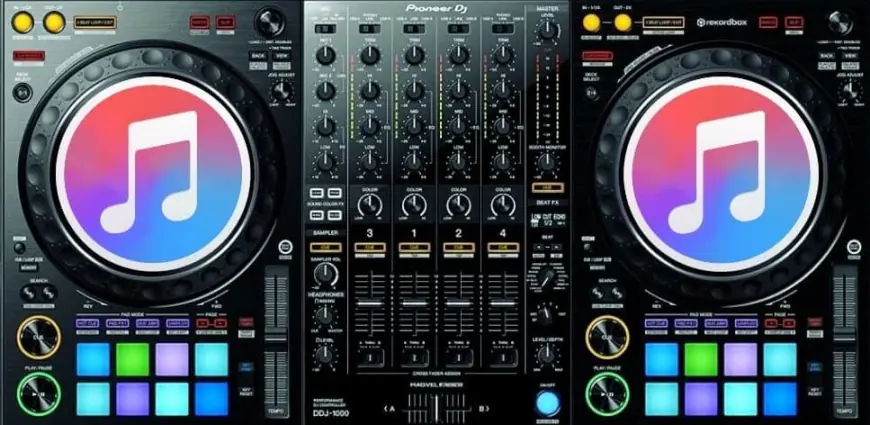Mastering the Art of Selling Your Remix on iTunes Without a Label
The music industry has always been an exclusive space where only a few artists found room to shine.

The music industry has always been an exclusive space where only a few artists found room to shine. With the digital revolution, however, this exclusivity is fading fast. Independent artists, especially those creating remixes, now have access to tools and platforms that were once reserved for label-backed musicians. Platforms like iTunes offer an opportunity to bypass the traditional route entirely.
If you’re an artist looking to carve out your space and monetize your remixes, learning how to sell your remix on iTunes without a label can open the door to a worldwide audience. This guide will delve into the steps, strategies, and nuances of this exciting venture, ensuring you have all the information needed to succeed independently.
The Rise of Independent Music Distribution
The rise of streaming platforms and digital music stores has democratized the music business. For decades, record labels held the keys to success, controlling access to radio play, studio time, and distribution. Today, independent artists have tools to upload and sell their tracks directly to platforms like iTunes.
This evolution benefits remix creators immensely. Unlike original compositions, remixes often face challenges with copyrights and permissions. Digital distribution companies have made these hurdles easier to navigate. Selling your remix without a label not only eliminates gatekeepers but also allows you to keep the majority of the earnings from your work.
Steps to Sell Your Remix on iTunes
Creating and selling your remix independently involves several key steps. Here’s how to ensure your track is ready for success.
1. Secure the Necessary Rights
Before publishing your remix, it’s crucial to secure permissions for any copyrighted material you’ve used.
- Understand Copyright Laws: Be clear about what constitutes fair use versus infringement.
- Negotiate Licensing Agreements: Reach out to copyright owners or publishers for permission to use original material. Many artists are open to collaborations or licensing arrangements.
2. Polish Your Remix
Listeners on platforms like iTunes expect professional-quality tracks. A polished sound can be the difference between attracting a fan base and being ignored.
- Invest in Mastering: Use mastering software or hire a professional to fine-tune your audio.
- Craft Unique Album Art: Visual appeal matters. Create a cover that reflects your remix’s vibe.
3. Choose a Digital Distribution Partner
You can’t upload music directly to iTunes as an independent artist. Instead, you’ll need to work with a distribution service.
- Top Platforms: TuneCore, CD Baby, and DistroKid are popular choices for their user-friendly interfaces and robust features.
- Compare Pricing Models: Consider whether a subscription-based or pay-per-release model suits your needs.
Promoting Your Remix for Maximum Impact
Uploading your remix to iTunes is only part of the equation. To generate sales, you’ll need to market your track effectively.
1. Leverage Social Media
Platforms like Instagram, TikTok, and YouTube are ideal for sharing your remix with potential fans. Short snippets, behind-the-scenes footage, and live sessions can create buzz.
2. Collaborate with Influencers
Social media influencers or DJs with established followings can help amplify your reach. Offering them exclusive access to your remix for promotion can be a win-win.
3. Target Playlists
Many music listeners discover tracks through curated playlists. Submit your remix to independent curators or genre-specific playlists to gain exposure
.
Building a Long-Term Strategy for Success
Selling your remix independently on iTunes is not just about a single release—it’s about building a sustainable career.
1. Develop a Personal Brand
Your brand is what makes you stand out in a crowded music landscape. Consistency in your visual aesthetics, sound, and messaging will help you create a recognizable identity.
- Logo and Artwork: Invest in professional designs.
- Tone and Style: Maintain a consistent sound across your tracks to build a loyal fan base.
2. Engage with Your Audience
Interaction with fans is crucial to keeping them invested in your music. Respond to comments, ask for feedback, and create content that resonates with your audience.
3. Analyze and Adapt
Track the performance of your remix using analytics tools provided by distribution services. Use these insights to refine your strategy for future releases.
Conclusion: Why Now Is the Time to Go Independent
The power to succeed as an independent remix artist has never been greater. Platforms like iTunes provide an accessible stage for your creativity, enabling you to connect with a global audience without the backing of a label. Taking control of your career means not only retaining more revenue but also preserving the artistic freedom that defines your music.
By following these steps, you can learn to sell your remix on iTunes without a label and set the foundation for a thriving career. The music world is waiting—make your mark today.
Related Articles:
For further reading, explore these related articles:
For additional resources on music marketing and distribution, visit DMT Records Private Limited.
Tags:
What's Your Reaction?
 Like
0
Like
0
 Dislike
0
Dislike
0
 Love
0
Love
0
 Funny
0
Funny
0
 Angry
0
Angry
0
 Sad
0
Sad
0
 Wow
0
Wow
0


























































